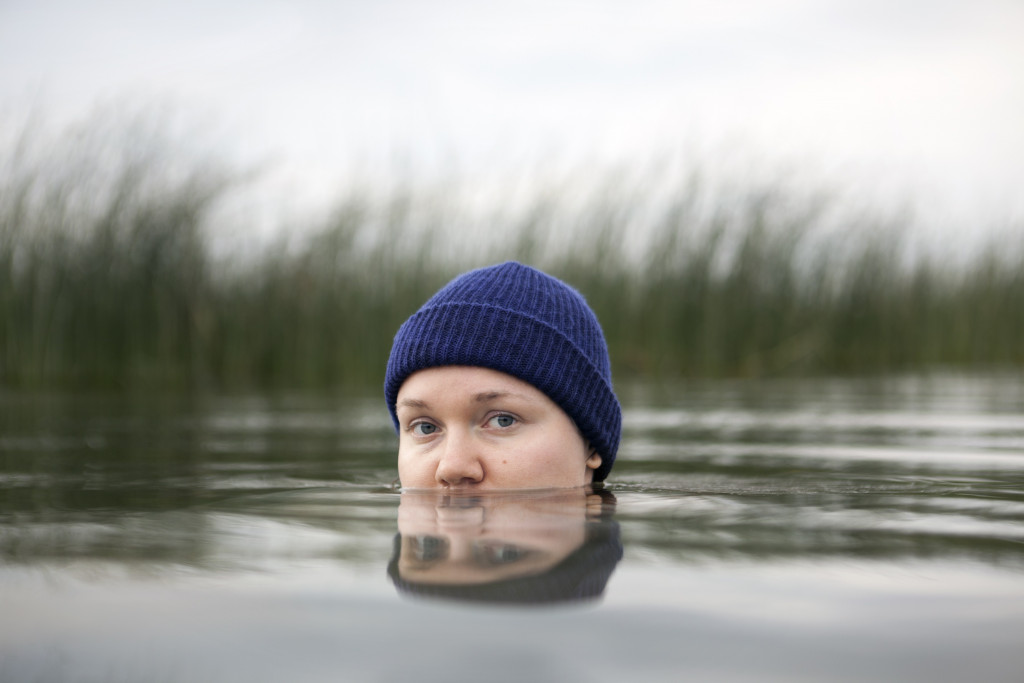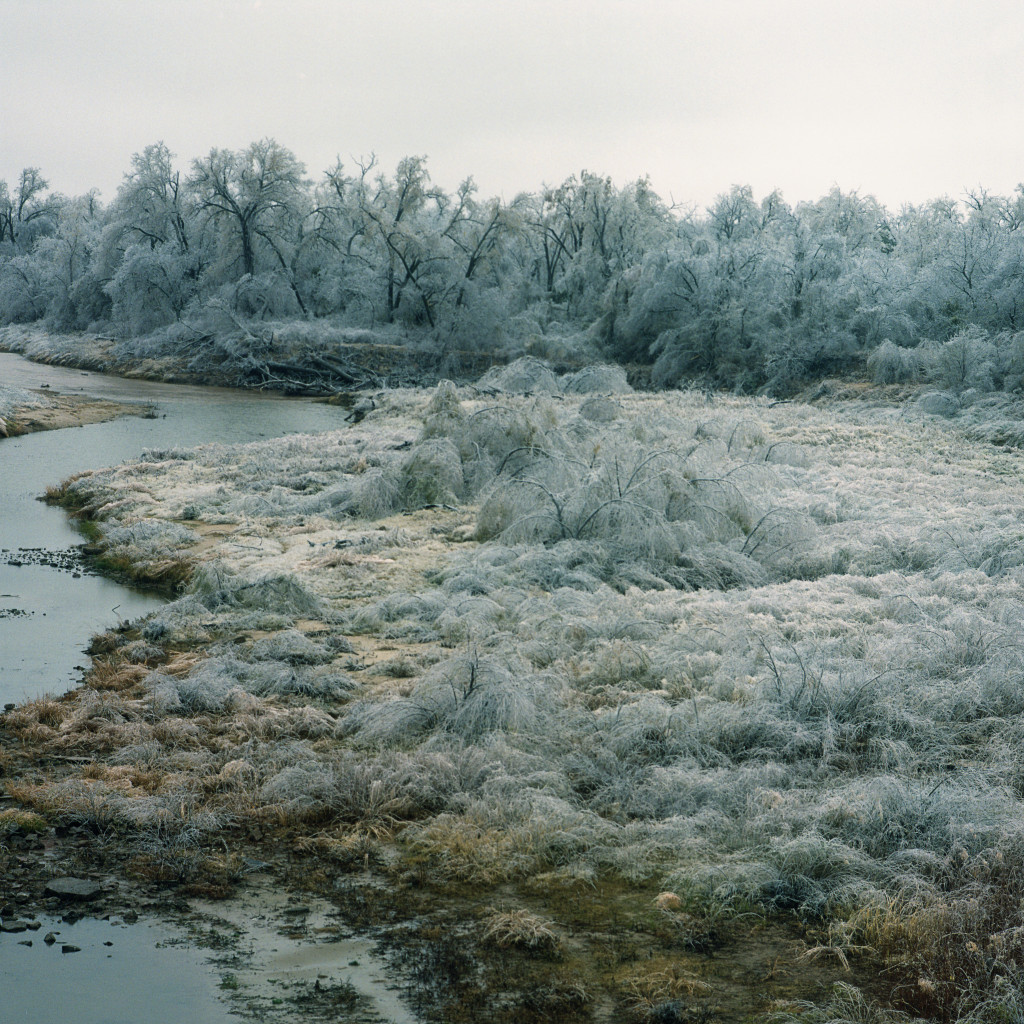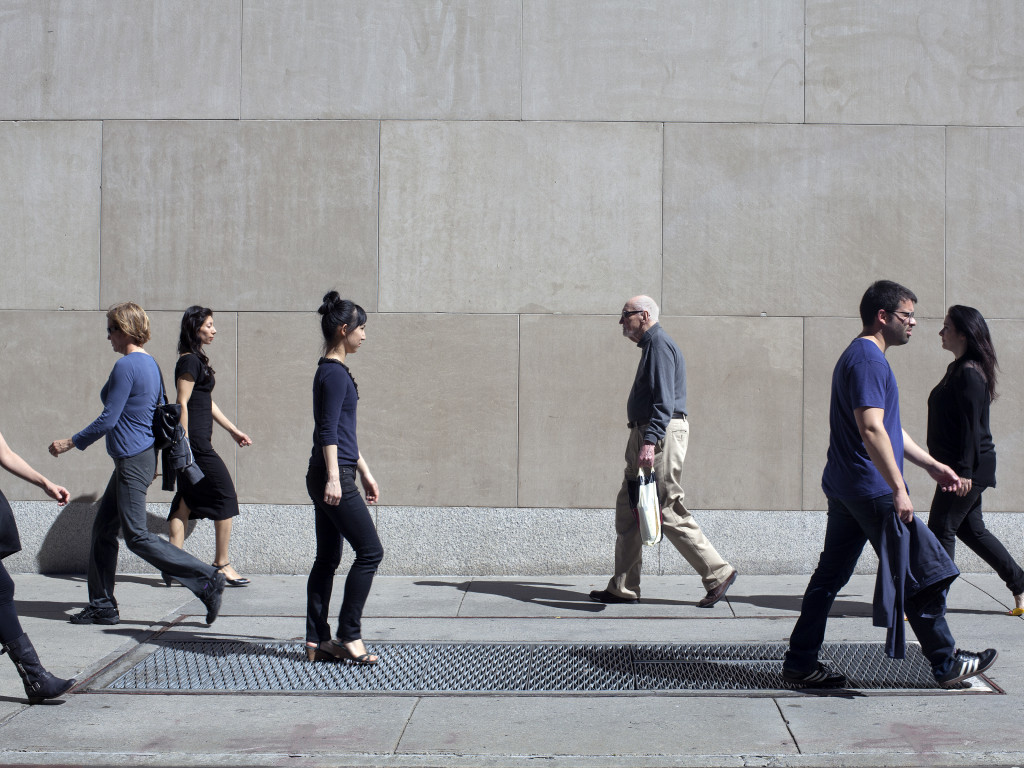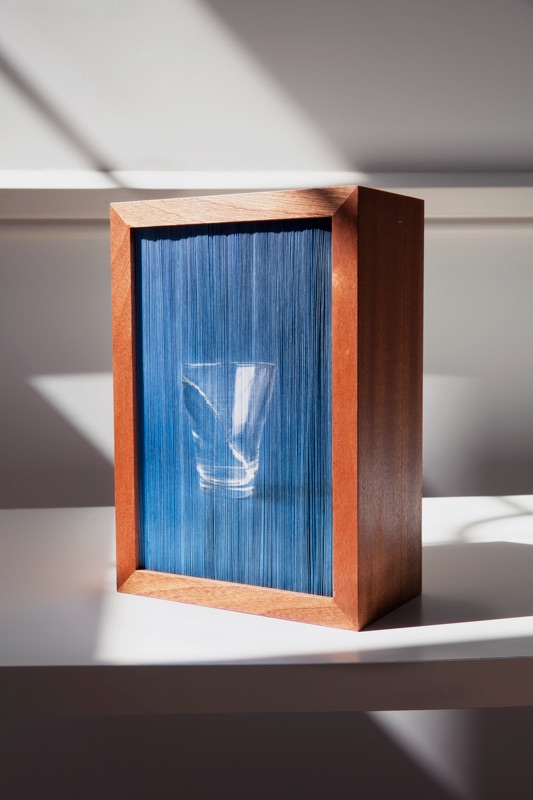
For a photography competition extending a $20,000 trophy, this edition of Rudin Prize for Emerging Photographers is decisively not very thrilling. Don’t tell museum officials, but we think we know how this one ends.
The experimental, the pretty, the safe and the emotional are sharing a large white room inside the Norton Museum of Art through Jan. 15. The four contemporary photographers featured were carefully selected by four established artists to take part in the biennial group exhibition named after New York City developer Lewis Rudin. One creative voice screams louder and more determined than the rest. It is the introvert type, but we can hear it if we listen attentively. On Jan. 5, we should know whether the judging panel heard it as well.
Nature is the wildest stage and yet safest refuge in Clare Benson’s photographs, which star the artist herself. In some of them, she emerges as an avid hunter proud of her game. She is calm and patient despite the harsh, cold surroundings. In others, like the 2014 print titled Still, she poses as if she were the beast being hunted. We only see half of the face peeking out of the water. A blue beanie covers her hair. She doesn’t play dead. She looks straight at us. No other animal is spotted in the clear freezing water. This is her territory.
Hunting has deep roots in the Michigan native’s family. Even her great-grandmother knew how to hunt. Benson, who was nominated by Finnish-American photographer Arno Minkkinen, grew up with her father, also a skilled hunter. Her mother died when she was a child. She is very comfortable exploring life and death through staged and real hunting episodes. The photographs convey her sense of belonging and borrow real elements of the family history, which lend them validity.
One of the most striking photographs in her collection, The Shepherd’s Daughter, depicts her bending forward at the weight of an enormous antelope head. The animal emerges out of her back like a magic trick. From a distance, the image portrays a two-headed creature, the Minotaur standing in snow-covered terrain. The antelope head might be a taxidermy trophy, but her sense of achievement is authentic.
In Pieta I, we see a hunter’s hands gently holding the small, bloody head of a hare. The rest of its fragile body lies in the snow. There is a sweet tenderness to this image, although it’s not clear whether the human intention is to show off the animal to an audience or leave it in its cotton bed to rest in peace. I choose to think the hunter’s lullaby — and not the weapon that can’t be spotted — has put it to sleep.

There is a soothing quality to Wesley Stringer’s images of abandoned spaces. The American photographer, originally from Oklahoma, offers us a poetic view of mundane settings he most likely happened upon, rather than set up. From the subject and title of his images, which is basically his initials followed by a series of digits, we gather the artist does not aim to shock. He merely provides a visual retreat inviting viewers to relax and let their minds wonder. There is nothing to fear here.
His most intriguing works are also the smallest. Displayed in a glass case is Box of Birds, which consists 54 square prints featuring up to five black birds at a time. Enough of them have been left out of the handmade box to convey a sense of movement and continuity through the different stages of flight. We can see the down and up strokes while other birds appear gliding. Next to them is one of Stringer’s handmade books containing Twelve Images of Cherry Blossoms and Airplanes. This time, the metal bird appears tiny next to the pink blossoms and looks as if it just departed from a flower to land in another. Unfortunately, we are not treated to the rest of the pages. Stringer was nominated by English photographer Michael Kenna.

The red hues and dramatic lighting in Elizabeth Bick’s photographs cannot be ignored. They are the brightest and cheeriest. The Brooklyn-based artist, who was nominated by Iranian artist and filmmaker Shirin Neshat, trained as a classical dancer before discovering street photography. Not surprisingly, her images depict an accidental dance arranged by the random placement of pedestrians who appear to be unaware of their role. Where everybody else sees everyday city life, Bick spots a rehearsal or a performance.
Street Ballet II is just one example of the street choreographies she brings to life. From a distance, the figures appear to be skating on an ice rink or perhaps they wait for the curtain to rise to begin their contemporary dance. In this gray concrete stage, the actors are passers-by holding coffee cups and shopping bags.

The visible world is of no interest to the fourth emerging photographer included in the show. Coincidentally, the viewers might feel the same way about her work. Snapping a photo is just the beginning of a bigger and more physical experiment by Alexandra Hunts. The Ukranian/Dutch born photographer is not concerned with capturing an object. She wants to dissect its essence, discover its core and portray what she deems worthy.
Her Artifacts # 53, for instance, consists of a stack of prints featuring the Dutch national standard of a kilo. A kilo is also the weight of the stack. Meanwhile, in Mass: Sublime Measurement, the artist is filmed picking, weighting apples and sorting them into 1-kilo groups. The accompanying installation presents 1,000 photographs from which the apples have been cut out. Only their shadows and absence remain. Hunts was nominated by Dutch photographer Rineke Dijkstra.
The fact that the four nominees’ visions are sharing the same space facilitates a comparison and makes the true commanding voice stand out naturally. What images do you keep coming back to? At which point did the room seem to go quiet? By the time you circle back to those big orange words reading “Rudin Prize,” you should know.
Rudin Prize for Emerging Photographers is on exhibit at the Norton Museum of Art, 1451 S. Olive Ave., West Palm Beach, through Jan. 15. Admission is free. Hours are noon to 5 p.m. Tuesday through Sunday except Thursday, when the museum is open from noon to 9 p.m. Call 832-5196 or visit Norton.org for more information.